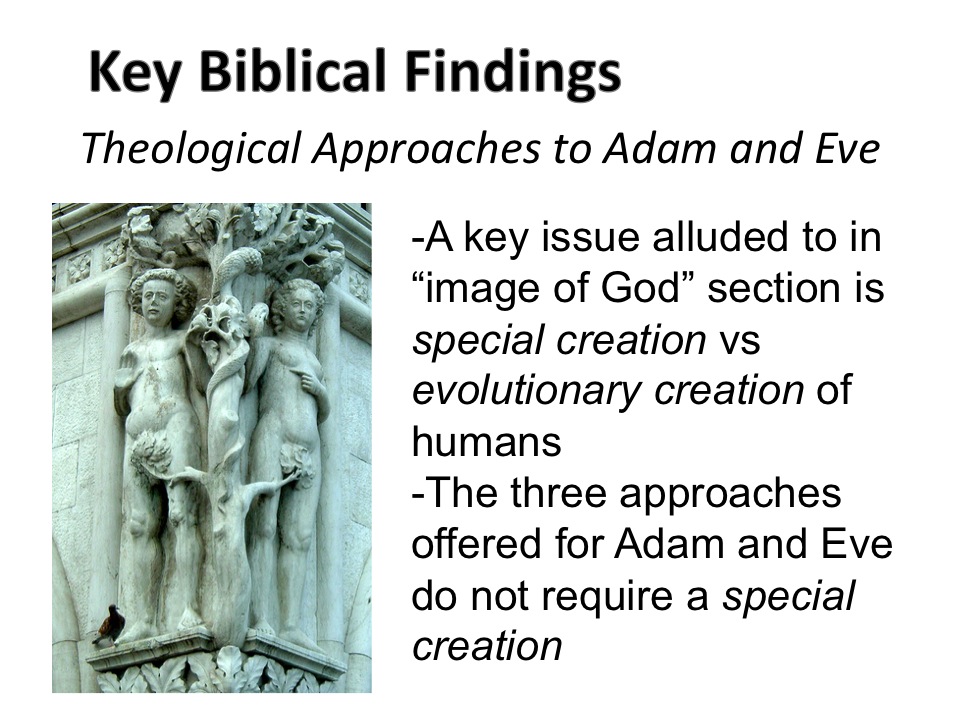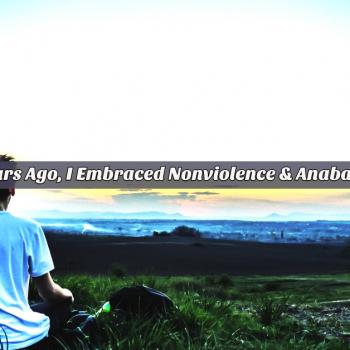The following series is based on my senior paper for Seminary. You may remember a video where I invited people to contribute their stories to help make my case. For the next couple weeks, I’ve decided to share my findings with you all. There will be a “thesis/problem” section, a “biblical theology” section, and an “application” section. I hope you will read along and share this with others! You can read the rest of the series here.
—————————————————————————————
Theological Approaches to Adam and Eve
We now move to a second area of concern for many evangelicals: Adam and Eve. Two problems evolution cause for Christians are: 1) to have been made in the image of God, it seems right that Adam and Eve needed to result from a special creation; and 2) if Adam is dismissed as non-historical, this minimizes Paul’s view that Christ saves humanity as the “second Adam.”
First, as we discussed above and will investigate in-part below, to bear God’s image identifies humankind with a particular vocation and intrinsic worth. This role in God’s good world does not require that Adam and Eve were the first humans, specially created from the dust. In fact, the text demonstrates something entirely different is at work in Genesis 2.
Second, in the first of three options explained below, there is no conflict between traditional beliefs about “original sin” because Adam will be presented as historical. His sinful actions became a representative choice, and thus, the consequences were handed down to all of Adam’s contemporaries and their descendants. In the second and third options for understanding Genesis 2-3, Paul’s perspective on Adam will become apparent.
All three of the following approaches to Adam and Eve offer careful readers of the books of Scriptures and nature helpful interpretive grids, which are faithful to Christian orthodoxy in general, and evangelical faith in particular.
Option 1: Adam and Eve as Historical
According to John Stott, his “… acceptance of Adam and Eve as historical is not incompatible with my belief that several forms of pre-Adamic ‘hominid’ may have existed for thousands of years previously.”[1] Many human-like creatures existed prior to Adam. They developed cultures, made “cave drawings,” and “buried their dead.” Calling these creatures homo sapiens is not a threat to a historical reading of Genesis 2-3 as long as we recognize that “Adam was the first homo divinus;” the image-bearer of God.
If one accepts this view of Adam, it must be asked: How is it that Adam is part of the evolutionary process if we are told in Genesis 2.7 – “the LORD God formed a man from the dust of the ground…”? Although this sounds like a special creation, we do well to look at a similar passage in Job 10.8-9 where God creates Job out of dust by molding him together like a potter with clay. This is a metaphor, as Job was born through natural childbirth. The same could be true of Adam who was born through the natural evolutionary process, but then set apart to become the image-bearer with his wife Eve[2] (who could have literally been formed from his rib, or could represent a form of relationship).[3]
Elements of the Adam and Eve story are figurative because, in the ancient world, true stories increased in mythology over time, not vice-versa. Therefore, although the early chapters of Genesis have some myth-like characteristics, we need not conclude that they are merely myths presented as history; for in fact, the opposite is true.[4] In this view, there was an actual historical couple that chose to rebel against God whose sinful choice still affects us all. As a result, the possibility of immortality (mediated through the Tree of Life) was lost, and Adam and Eve were doomed to the natural consequences of evolutionary history: eventual death.[5]
[1]. John R.W. Stott, Understanding the Bible, expanded ed. (Grand Rapids: Zondervan Pub. House, 1999), 55-56.
[2]. Keller, Creation, Evolution, and Christian Laypeople, 10.
[3]. John Goldingay, Genesis for Everyone: Part 1, Old Testament for Everyone (Louisville: Westminster John Knox Press, 2010), 41.
[4]. Keller, Creation, Evolution, and Christian Laypeople, 8.
[5]. Walton, The Lost World of Genesis One: Ancient Cosmology and the Origins Debate, 100-1.












